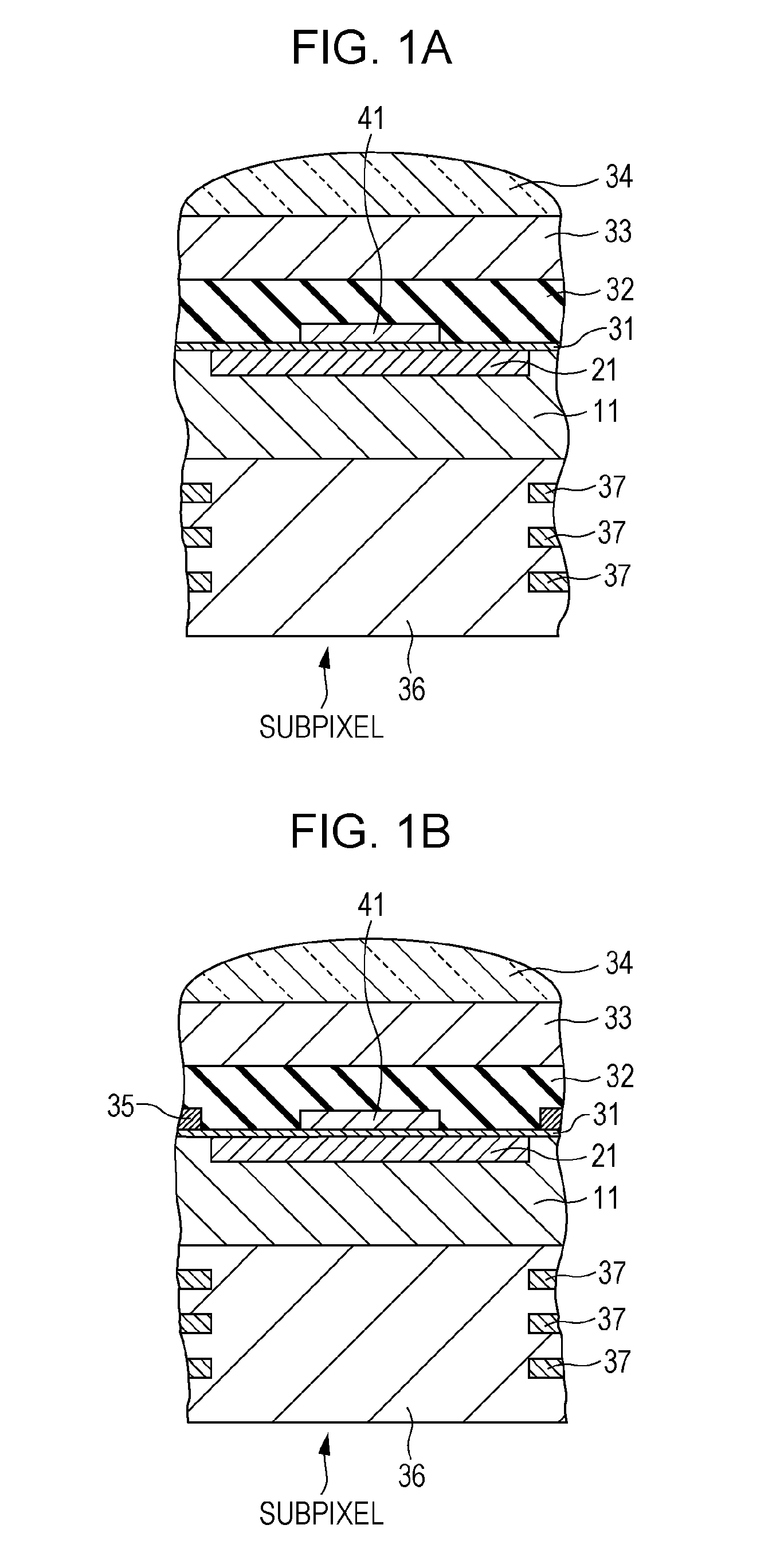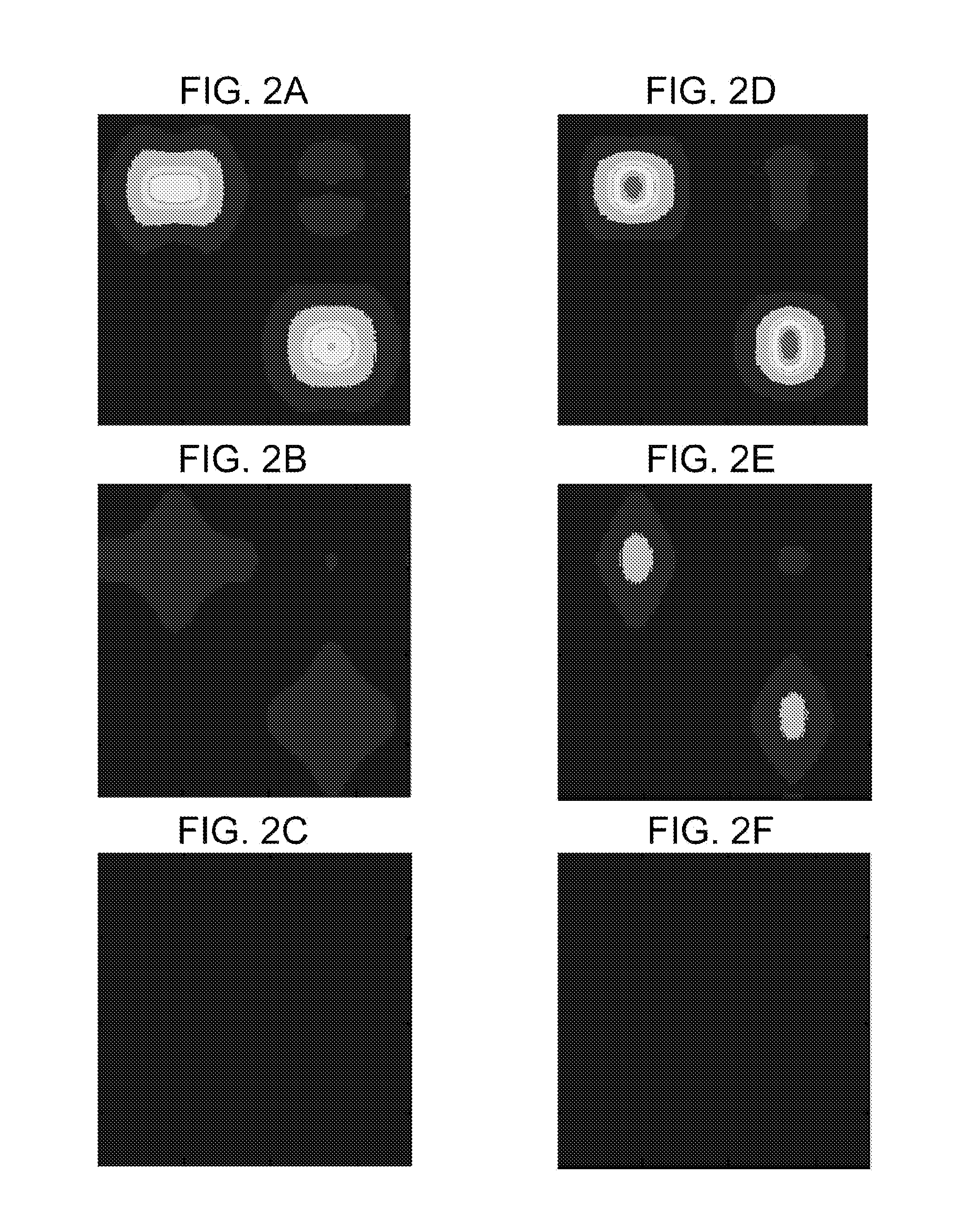Solid-state imaging element and method for manufacturing the same
a technology of solid-state imaging and manufacturing methods, applied in the direction of material analysis, radio frequency control devices, instruments, etc., can solve the problems of insufficient approach for subpixels of about 0.9 m in size, and achieve the effect of enhancing positioning accuracy and preventing sensitivity and color mixing
- Summary
- Abstract
- Description
- Claims
- Application Information
AI Technical Summary
Benefits of technology
Problems solved by technology
Method used
Image
Examples
first embodiment
[0049]In a first embodiment, a solid-state imaging element will be described. FIG. 1A is a schematic fragmentary sectional view of a solid-state imaging element according to the first embodiment. The solid-state imaging element is of rear emission type, and includes (A) a light-receiving element portion 21 formed in a semiconductor layer 11, (B) an insulating layer 32 disposed over the semiconductor layer 11, and (C) an antenna structure 41 disposed over the light-receiving element portion 21 and enclosed in the insulating layer 32.
[0050]In the solid-state imaging element of the present embodiment, an insulating interlayer (not shown) is formed over the antenna structure 41 and the insulating layer 32. Although the insulating interlayer is not necessarily provided, it is preferably provided from the viewpoint of enhancing the adhesion of a color filter. The color filter (on-chip color filter) 33 is formed on the insulating interlayer, and a microlens (on-chip microlens) 34 is dispos...
second embodiment
[0067]In a second embodiment, the solid-state imaging element of the first embodiment is modified. For the second embodiment, the red color mixing ratios were measured of solid-state imaging elements including the disc-like antenna structures 41 having different diameters R1 and heights H1. The results are shown in FIG. 3A. In FIG. 3A, data A indicated by black squares represents the results of samples each including the antenna structure having a height H1 of 0.2 μm; data B indicated by black rhombuses represents the results of samples each including the antenna structure having a height H1 of 0.1 μm; and data C indicated by black triangles represents the results of samples each including the antenna structure having a height H1 of 0.5 μm. As shown in FIG. 3A, the antenna structure 41 can have a diameter R1 of 0.2 to 0.4 μm, more preferably 0.2 to 0.3 μm. Preferably, the antenna structure 41 is in a columnar shape, and its section taken in the direction perpendicular to the height ...
third embodiment
[0069]In a third embodiment, the solid-state imaging element of the first embodiment is modified. In the third embodiment, a tungsten (W) light-shielding layer 35 is provided around the antenna structure 41 with the insulating layer 32 therebetween, as shown in the schematic fragmentary sectional view of FIG. 1B. More specifically, the antenna structure 41 is surrounded by a ring-shaped light-shielding layer 35 in such a manner that they are separated by the insulating layer 32. Samples of the solid-state imaging element according to the third embodiment were prepared. In the samples, the ring-shaped light-shielding layer 35 had a height of 0.2 μm and a width (thickness) of 0.2 μm, and the distance between the side surface of the antenna structure 41 and the side surface of the light-shielding layer 35 was 0.15 μm. The antenna structure 41 had a height H1 of 0.2 μm. The red color mixing ratios were measured of the samples including disc-like antenna structures 41 having different di...
PUM
 Login to View More
Login to View More Abstract
Description
Claims
Application Information
 Login to View More
Login to View More - R&D
- Intellectual Property
- Life Sciences
- Materials
- Tech Scout
- Unparalleled Data Quality
- Higher Quality Content
- 60% Fewer Hallucinations
Browse by: Latest US Patents, China's latest patents, Technical Efficacy Thesaurus, Application Domain, Technology Topic, Popular Technical Reports.
© 2025 PatSnap. All rights reserved.Legal|Privacy policy|Modern Slavery Act Transparency Statement|Sitemap|About US| Contact US: help@patsnap.com



